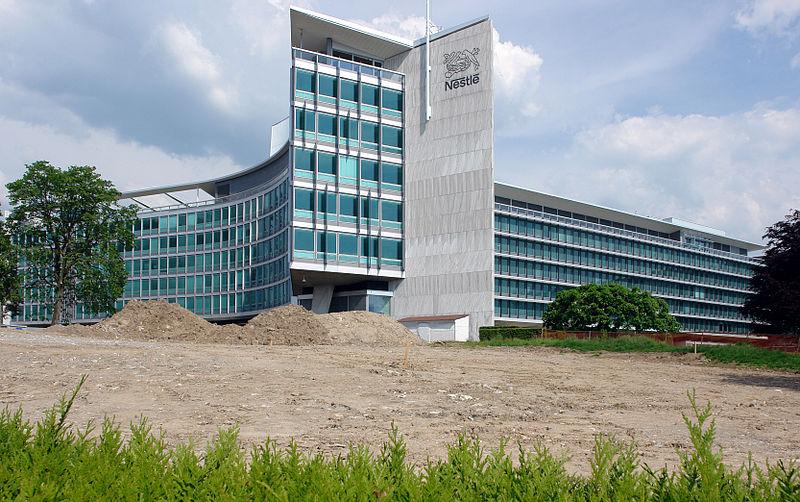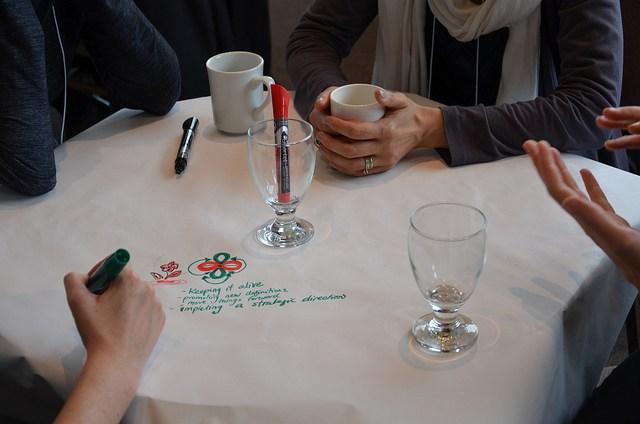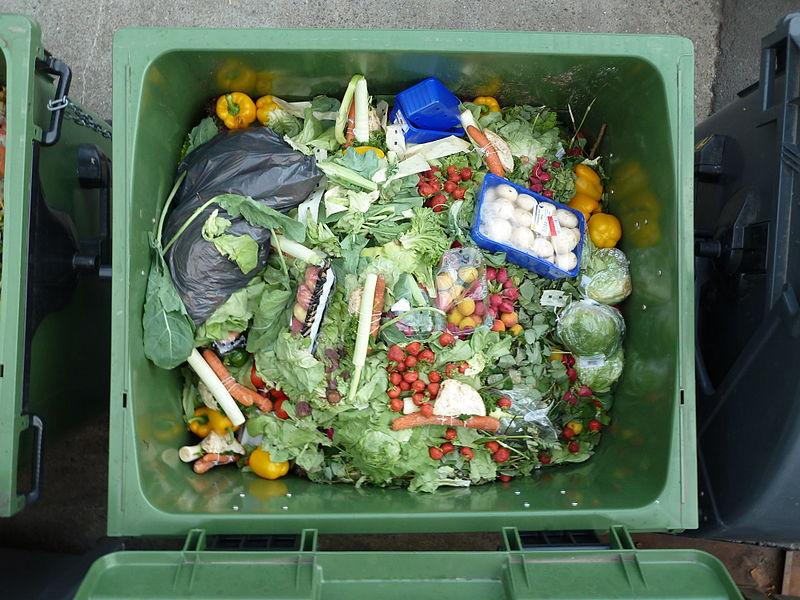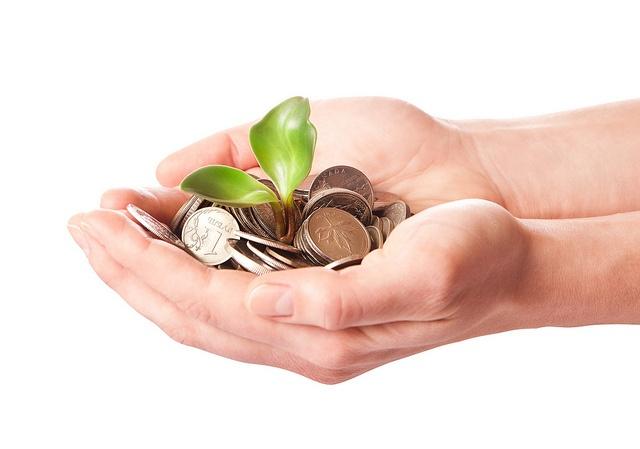First 'Avoided Forest Conversion' Offsets Purchased in the California Market


By Kasey Krifka
The Climate Trust, a mission-driven nonprofit that specializes in financing climate solutions, has received the first California carbon offsets (CCOs) from an Avoided Forest Conversion project. The Green Assets-Middleton Place project conserves more than 3,700 acres of pristine southern coastal habitat near Charleston, South Carolina, and prevents it from being converted to non-forest land uses.
The project owner, Middleton Place, sold 243,375 carbon credits to the Climate Trust -- equivalent to the annual electricity use of over 65 percent of the households in Charleston.
Avoided Conversion projects prevent forestland from being converted to non-forestland use by dedicating the property to continuous forest cover. Additionally, Middleton Place makes a concerted effort to manage its forest resources for sustainability and the provision of critical habitat for a diversity of wildlife.
“The Climate Trust is pleased to engage in the California compliance market and purchase credits from a highly-esteemed project that achieves such significant greenhouse gas emissions reductions,” said Dick Kempka, chief commercial officer for the Climate Trust. “This Avoided Forest Conversion project also generates considerable societal co-benefits by preserving flora and fauna, and allowing for recreational opportunities such as fishing, hiking, kayaking and horseback riding.”
The Middleton property holds extraordinary historical importance for this region of South Carolina and is a significant cultural point of interest in the United States.
Adjacent to the forestland associated with the carbon project area lies Middleton Place. Recognized as a National Historic Landmark, Middleton Place is home to America's oldest landscaped gardens. Envisioned and created by Henry Middleton in 1741, the gardens have been recognized by the Garden Club of America as “the most interesting and important gardens in America.”
“We appreciate The Climate Trust’s significant commitment to the environment, including the reduction of greenhouse gas emissions,” said Hunter Parks, president & CEO of Green Assets. “With our expertise in helping landowners to establish carbon-offset credit programs, it was a pleasure working with the Climate Trust team to secure the purchase of carbon credits from Middleton Place.”
“We are proud to transact on a project that marries conservation, a market based return, and environmental markets so significantly,” said Sean Penrith, executive director for the Climate Trust. “This acquisition reflects our continual desire to put a price on our climate and its natural resources, as we position ourselves as an investment fund designed to finance environmental credits across North America.”Image credit: Flickr/Hunter Desportes
Kasey Krifka is the Marketing & Communications Manager for The Climate Trust
Banks warned over ESG risks of palm oil investments


Environmental and human rights groups have sent a global alert to several banks over their investment in Golden Agri-Resources (GAR), one of the world's largest palm oil companies.
Credit Suisse, Oversea-Chinese Banking Corporation and Mitsubishi UFJ Securities are acting for GAR in a new bond offering worth up to $400m, according to a Debtwire report.
The Banktrack Newtwork alert aims to make potential financiers aware of the extreme and outstanding social conflicts in the palm oil agribusiness sector. It stated: “Banks and investors must examine the full range of environmental, social, reputational, legal and market risks prevalent in the palm oil sector and ensure that they undertake enhanced, robust due diligence procedures to identify, understand and screen these risks prior to any financing.”
Golden Agri-Resources, or GAR, has been among the early adopters in a wave of company policies that pledge to protect forests, peatlands, and human rights, indicating the company’s commitment to become a more responsible business. However, campaigners say detailed field studies of GAR operations in Indonesia show numerous violations of national and international law.
“At this moment, an investment in Golden Agri-Resources is an investment in forest destruction and human rights violations,” said Jeff Conant, international forests campaigner at Friends of the Earth. “Like other companies in the palm oil sector, GAR is talking a good game on paper, but all evidence shows that their destructive practices continue. Any bank that involves itself with GAR should be prepared for managing a high-risk client under the scrutiny of civil society watchdogs.”
McDonald's makes global commitment on deforestation


McDonald’s has announced a global commitment on deforestation across its expansive global supply chain.
The commitment builds on the fast food giant's Global Sustainability Framework and encompasses all of the company’s products, focusing on beef, fiber-based packaging, coffee, palm oil, and poultry - for which the company will begin developing specific time-bound sourcing targets in 2015.
McDonald’s says it will continue working collaboratively with a broad range of stakeholders, including suppliers, governments and NGO partners, to develop long-term solutions designed to combat deforestation around the world.
“This commitment to end deforestation demonstrates another major step for McDonald’s as we work to increasingly embed sustainability throughout our global business,” said Francesca DeBiase, senior vice president of McDonald’s Worldwide Supply Chain and Sustainability. “Making this pledge is the right thing to do for our company, the planet and the communities in which our supply chain operates. We’re excited to continue collaborating with our supplier partners to achieve our goals.”
McDonald’s commitment also aligns with the company’s endorsement of the New York Declaration on Forests, a call for global companies and organizations to “do their part” in an effort to end natural forest loss by 2030.
According to World Wildlife Fund (WWF), deforestation creates far-reaching challenges and implications for future generations due to loss of biodiversity and contributions to climate change, and accounts for 15-20% of global greenhouse gas emissions – underscoring the urgent need to address the issue. WWF helped advise McDonald’s on the deforestation commitment.
“We commend McDonald’s plans to combat deforestation across their full range of commodities. This will lead to real conservation impacts on the ground, and we hope that this commitment will inspire other companies to take action,” said David McLaughlin, WWF’s vice president of sustainable food.
“This commitment is bolstered by McDonald’s ongoing sustainability work with the beef industry and the company’s participation in WWF’s Global Forest & Trade Network. Expanding monitoring and compliance efforts by McDonald’s and their suppliers will be critical to ensuring the success of this important initiative.”
View McDonald’s full commitment here.
Nestlé USA Announces Factories Now Landfill-Free


Nestlé USA, best known for its water, coffee and chocolate products, has announced a milestone: Effective today, all of its U.S.-based factories are now landfill-free.
In 2014, Nestle Global announced that 15 percent of its factories worldwide (72 in total) had attained zero-landfill status, exceeding its target for 2015. The addition of U.S. manufacturing centers to this list is part of the company's global effort to retool the way it handles waste and product manufacturing.
“Environmental sustainability is part of Nestlé’s commitment to creating shared value in society,” said Paul Grimwood, CEO of Nestlé USA. “This is an especially noteworthy achievement given the breadth and complexity of our manufacturing operations across a variety of categories." Grimwood noted that the announcement was a reflection of the company's environmental commitment.
Nestlé USA, which manufactures products for the U.S.-based consumer market, has 23 factories, 43 distribution centers and 13 sales offices across the country, and it's staffed by more than 23,000 employees. In 2014, the company reported sales of $9.7 billion, almost 11 percent of Nestle Global's total sales.
As part of Nestlé's ongoing effort to attain sustainable manufacturing processes across all of its markets, says the corporation, the company now manufactures its recyclable water bottles with 50 percent recycled PET (polyethylene terephthalate) materials. With a U.S. market share of more than 50 percent, the conversion to recycled PET helps to contribute to Nestlé's ongoing effort to attain a reputation as a sustainable company.
While Nesté USA already has a long list of accomplishments in integrating green operations into its supply chain (both its Little Chute, Wisconsin, and its Anderson, Indiana, operations have received kudos for innovative changes that help reduce their carbon footprints), the recent announcement did not mention whether the company's plastic waste was included in its latest stats. Even with the increased use of recycled PET these days, more than 80 percent of the water bottles manufactured by today's water companies still end up in the landfill.
Changing consumer behavior when it comes to packaging disposal can be a lot harder than retooling and converting the manufacturing methods in a network of factories. Perhaps with Nesté's continued success in the green arena, it will be able to find a way to create packaging that is more reusable, or programs that raise consumers' efforts to recycle empty beverage bottles. Zero-landfill accomplishments start at the manufacturing level, we agree, but they really come into their own when the company's consumer base follows suit.
Nestlé logo: Nestlé
Nestlé HQ, Switzerland:Port(u*o)s
Unilever’s Handwashing Campaign Goes Beyond CSR and Saves Lives


For any company mulling over a corporate social responsibility program, the best resource is often the product or service that has made it a success. One of the leading examples is Lifebuoy, a brand of soap that dates back to the 19th century. Once a popular soap in North America and Europe, the Lever Brothers brand endured, both in sales and popular culture, largely because of cheeky advertisements that helped make the term “B.O.” famous. And of course, who can forget the Lifebuoy scene in the 1983 classic "A Christmas Story"?
Over the years Lifebuoy’s reach has gone global, and it is now manufactured in India for Unilever’s Asian market. The soap helps contribute to the growth of Hindustan Unilever Ltd., which sells many of its parent company’s brands in India and is a force with its US$4.5 billion in annual sales. For several years running, India’s Unilever and Lifebuoy employees have been instrumental in running one of the country’s most successful social responsibility programs. The brilliance of this ongoing campaign is in its simplicity: teaching a task that takes about 20 seconds.
Data from the World Health Organization (WHO) indicates that every year diarrhea kills approximately 800,000 children under the age of 5, or about 1 in 10 child deaths. Many of those premature deaths could be prevented with adequate sanitation. No fancy liquid soaps or hand sanitizers are necessary: Washing one’s hands for 20 seconds is one of the best preventive measures to prevent the spread of germs that can cause diarrhea and other illnesses. Handwashing may seem to be a simple part of the daily routine to us, and science shows it can save lives, but many people simply don’t do it. According to the Hindustan Unilever spokesperson interviewed by TriplePundit, Lifebuoy saw an opportunity to promote this simple habit by combining its success with selling consumer products along with public health and behavioral science research.
Lifebuoy’s first handwashing programs started in 2009. The company currently runs two initiatives. First, Hindustan Unilever works with schools by targeting schoolchildren through child-friendly materials including comics, songs, games and rewards to encourage children to start and sustain regimented handwashing behavior. In addition, the company focuses on new mothers, because 42 percent of deaths that strike children under the age of 5 in India occur during the first 28 days of life.
Lifebuoy employees worked with health officials to organize clinical trials, the results of which showed remarkable improvements in the reduced spread of diseases. Emboldened by this success, the company decided to deploy these programs on a mass scale across India and then to other countries. Hindustan Unilever claims that over the past six years, Lifebuoy programs have reached 257 million people in 24 countries. By 2020, the company aims for its handwashing programs to contact 1 billion people globally.
“Unilever believes that businesses that put sustainability at the heart of their business model can grow profitably,” the spokesperson said, “and make a positive contribution to society whilst protecting the planet for future generations.” Programs such as Lifebuoy’s handwashing agenda are at the heart of the parent company’s Sustainable Living Plan, which since 2010 has been behind the company’s drive to increase profits while becoming more environmentally and socially responsible.
With five years remaining and 25 percent of its goal reached so far, Lifebuoy’s brand team, which oversees these handwashing programs, has much work to do. Nevertheless, the breadth and creativity this program has demonstrated indicate reaching 1 billion people is definitely possible. For example, during an important Hindu festival, Unilever distributed roti (a flatbread) imprinted with the message, “Did you wash your hands with Lifebuoy today?” The company claims 2.5 million of those rotis were handed out, so undoubtedly many of the festival’s attendees got the message. Unilever also has worked with schools to encourage handwashing at mealtimes, and has assisted with the retrofitting of water pumps so that children can embrace this habit seamlessly and even with joy.
Innovation is key to Unilever’s quest to keep the handwashing drumbeat going. Soap and innovation do not intuitively belong into the same sentence, but Lifebuoy has found some different ways to promote its brand and the benefits ofhandwashing. One product, a color-changing handwash, shows children how long they should wash their hands by transforming from green to white; it's fun for kids, and assures parents that their kids have had their hands under the faucet for a long enough period of time. First launched in India and Indonesia, the product is also available in markets throughout Africa and Asia. Of course, liquid handwash has a higher cost than bar soap, so Unilever developed a mini-pump that allows consumers to keep those hands clean, but at an affordable price.
Unilever Hindustan would not release any specific information that indicated any correlation between its handwashing campaign and sales of Lifebuoy. But according to the company spokesperson interviewed for this article, such programs have benefits all the way around. If more people buy soap, after all, the market for this product increases, and not just for Unilever and Lifebuoy, but also for their competitors. Furthermore, an increase in sales can also inspire companies such as Unilever to find, and fund, even more ways to encourage people to wash their hands.
“This program is unique because it is not just a charitable CSR program that sits aside to the business,” the spokesperson said, “but clearly draws resources and innovation to make it even bigger, benefitting both businesses and communities.”
While Lifebuoy’s brand team runs the various handwashing campaigns, the company relies on employees across its operations to contribute in order to make this program thrive. With over 1,500 employees volunteering at schools across India, Unilever’s work in this country of 1.3 billion people is arguably the largest corporate social responsibility program worldwide when considering the number of people touched by this series of campaigns.
Image credit: Pexels
Sustainability Professionals Need to Be Weird to Grow Revenues


On this Earth Day, I want to recognize and challenge the dedicated community of sustainability professionals. What these talented people have achieved over the last 10 years is historic. From Apple to Walmart, from San Diego to New York, sustainability has become a core best practice of business and community success. My economic research points to the achievement of a multi-trillion dollar global annual revenue economy that is growing profits, reducing environmental impacts and creating jobs.
With success comes some frustration within the sustainability professional community. The central theme of this frustration is often over the scale or intensity of CEO engagement. It is not that sustainability professionals feel their CEO is unsupportive or unaware of their efforts or the value of sustainability. Rather, the issue is how to get the degree of CEO support that would make sustainability the foundation of their company's strategies and activities.
Sustainability professional challenge
One reason for frustration over CEO access and empowerment is that CEOs are strategic while much of the success achieved by sustainability professionals is often tactical. CEOs are paid the big bucks to make the crucial decisions that determine their company's market positioning against competitors. Proposing strategic, revenue-growing opportunities is the engagement path to inside the office of the CEO.
Of course, making a strategic revenue-growing business case is easier said than done. Designing and executing this type of business case requires creative abilities to conduct analysis and craft strategies that are "outside the box." Getting creative is the next maturation step in sustainability leadership and for winning enhanced CEO commitment.
Winning customers by being weird
The creative path for winning customers is to act weird. For example, being “weird,” or outside the product design norm, defines Apple and its success. It no longer defines Nokia.
In terms of pioneering a technology, Tesla is so weird that its stock is selling for over $200 per share with a total market capitalization that is almost half of the Ford Motor Co., even though Tesla is only delivering about 10,000 electric cars per month. Elon Musk’s other technology weirdness is solar. SolarCity, of which Musk sits as board chairman, threatens to disrupt the $300 billion annual revenue utility industry by offering consumers guaranteed lower electricity bills.
Walmart is attempting to be very weird. The company has made sustainability a foundational business best practice for achieving everyday low prices. The company is attempting to win price-conscious customers by offering products that “cost less, mean more.”
Patagonia is so weird that it runs ads asking customers not to buy its products. This marketing genius has won the company intensely loyal millennial-generation customers. Chipotle does weird animated movies with music by country western singers that have garnered millions of YouTube views -- and loyal customers that have propelled the company's stock prices to a level where Chipotle is now the most valued restaurant chain in America.
Sustainability professionals need to act weird
Winning the customer is the focal point that drives the sustainability weirdness of companies like Apple, Tesla, Patagonia, Chipotle and Walmart. Sustainable best practices are now proven paths for lowering costs to enable competitive prices that win customers. Sustainable best practices are proven to win millennial generation customers who select what they buy and who they buy from based on the authenticity and transparency of the company and its product. Acting weird to win customers has emerged as the ultimate business opportunity for sustainability.
However, it appears that more and more sustainability professionals have boxed themselves into a tactical corner. Sustainability professionals have achieved quantum leaps in their ability to measure, monitor, reduce and report environmental footprints. They are increasingly successful in selling sustainable best practices to CFOs on cost-savings economics. However, CEOs can often view the practice of sustainability as an engineering and accounting staff function that's focused on risks and costs, rather than the CEO's strategic focus on growing revenues. What can reenforce this CEO perspective are corporate responsibility and sustainability reports that read like all the other corporate staff reports: the ones that are turned into slide presentations and delivered at staff meetings rarely attended by the CEO.
A sustainability mission statement that will engage CEOs
Apple, Tesla, Solar City, Chipotle, Patagonia and the businesses I work with are winning customers and growing revenues by offering great product designs -- sold at a competitive price -- that are solutions to customers' “in me, on me and around” issues. That should be the mission statement of every sustainability professional. Delivering on that mission will definitely get the positive attention of the CEO. It will also catapult sustainability to its true role within a business as a strategic driver for winning customers and growing revenues.
Image credit: Book cover, "The Secret Green Sauce"
Eliminating the Food-to-Landfill Pipeline, One Business at a Time


Global food waste is one of the largest and most harmful contributors of greenhouse gases to the environment. Nearly 1.3 billion tons of food gets lost or wasted every year. This fact equates not only to environmental degradation as a result of the harmful methane gasses released as food rots away in capacity-strapped landfills, but also spells substantial economic losses for food producers and sellers.
What’s the solution?
While solving food waste at the root of production is a concern many agriculturalists, engineers and scientists are looking to solve, behavioral change at the consumer and commercial levels can be the key to significantly decreasing the amount of compostable food waste sent to the landfill by both households and businesses globally.
BigGreen.co.uk is a leading expert in recycling and waste disposal for businesses of all kinds. Its independent company, based in Britain, is heavily calling for legislation in the U.K.'s upcoming May elections to urge officials to make commercial recycling a requirement. Citing the state of California’s recently passed Assembly Bill 1826, which requires all commercial generators of food waste to have it composted or transformed to energy via anaerobic digestion, BigGreen believes that similar legislation could be a match for solving the landfill crisis in its part of the world.
"Most of the time, the general waste bin seems the most convenient place to dump unused food," said BigGreen.co.uk spokesperson Mark Hall. "And now's the time to change our mindset when it comes to this – both in the home and in the workplace."
According to BigGreen.co.uk, the biggest culprits when it comes to food waste are:
- Food processing industry
- Waste from supermarkets and shops
- Restaurants
- Hospitals
- Schools
- Prisons and other institutions
- Workplace cafeterias and canteens
Barriers
When addressing commercial businesses, institutions or organizations responsible for large amounts of food waste, tossing around highly savvy words like “anaerobic food digester” and “compost” could be intimidating. Intimidating words can also be attached to hefty price tags for disposing appropriately, thus creating a barrier for businesses to participate in landfill diversion.
By simplifying language through proper education and putting processes in place to assist business owners or operations managers, achieving a greater share of commercial composting can be a more realistic pursuit.
For example, the city of Seattle implemented a commercial recycling program in January of 2015 to help businesses save money (32 percent compared to garbage fees) through composting their food scraps. Businesses simply reach out to their garbage service provider to receive their compost containers for weekly pickup.
Compelling economic opportunities
In the fall of 2014, the state of Massachusetts enacted a commercial food-waste ban, requiring 1,700 of the states largest food-waste generators to divert organic compounds from landfills. The state’s Department of Environmental Protection found that the price of sending food waste to the landfill totaled $60 to $80 per ton.
An earlier story in the Guardian reported:
“It’s expensive to get rid of; there’s a whole suite of environmental problems associated with it, and we’re leaving economic opportunity on the table,” said David Cash, commissioner of the Department of Environmental Protection, which will regulate the new law. “That banana peel can be turned into compost. It can be turned into energy. Not-quite-expired food can be directed to food pantries or used to feed agricultural animals.”
Collective problem-solving
Arguably, there is no silver bullet that can spell universal regulation for every country, city or town. Demanding action through law enforcement alone may not be enough to get businesses on board to help tackle this issue. Campaigns led by local government regulation, NGO initiatives and private-sector resourcing will need to be met with hard data, educational resources, and tools and metrics to significantly thwart the food-to-landfill pipeline.
Image Credit: Wikimedia Commons
6 Steps to Finance Your New Social Enterprise


By Lisa Curtis
You have a great business idea. All your friends say they would buy it. So now all you need is a little bit of capital to turn that idea to your first prototype. Raising money shouldn’t be that hard; it’s a great idea, right?
Four years ago, I thought I had a great idea that would fund itself. Coming out of the nonprofit world, I mistakenly believed that financing a for-profit business would be a lot easier than the donation-wringing of the nonprofit sector. After all, isn’t that the whole point of making a profit?
While fundraising for Kuli Kuli, I quickly found that while for-profit social enterprises should ultimately be self-sustaining, they rarely begin that way. Instead, different types of fundraising are needed at different stages as the business grows. Here’s what worked for me:
1. Put it to paper
Putting your idea to paper and submitting it to be torn apart by experienced judges is both a painful and useful process. There is a plethora of business plan competitions out there, and even the ones that don’t directly offer a financial prize can help connect you to investors in their network. The Mentor Capital Network falls in that category, providing an incredible amount of business plan feedback and access to a wide array of mentors and investors.
The Wild Gift Foundation provides a $10,000 prize to young, environmentally-oriented entrepreneurs, plus an unbeatable three-week wilderness trek. Ashoka’s Changemaker platform offers a range of opportunities from cash prizes to boot camps. And there are even more opportunities for students, ranging from the Global Social Venture Competition for MBA students to the $1 million Hult Prize.
Chances are, you won’t win most of these competitions (we certainly didn’t), but the process and the feedback you receive will be valuable in the long-run for developing your venture and increasing your prospects of getting funded.
2. Get with a program
After going through a business plan competition, you should have a solid plan on paper and perhaps a bit of funding as well. Now you need to build out your network. If I’ve learned anything through my own grueling fundraising process with Kuli Kuli, it is the importance of networks. Simply stated, people give money to people they like.
Joining an accelerator program is a great way to quickly build your network while learning a thing or two along the way. Similar to business plan competitions, accelerator programs vary in whether they supply funding directly or simply connect you to a network of investors. The Unreasonable Institute and Echoing Green are perhaps the best-known social enterprise accelerator programs, but there hundreds of other accelerators, many of which are searchable on the Enable Impact database.
3. Crowdfund
A lot of people launch crowdfunding campaigns too early with too little preparation and wonder why they fail. Before you launch your campaign, you should know exactly how much money you’ll need to launch your social enterprise and what the final product will look like. These are things that you should have researched through your business plan competition and refined through an accelerator program.
For Kuli Kuli, being ready to crowdfund meant researching bar manufacturers, printers and ingredient vendors to figure out exactly how much we’d need to crowdfund for our first manufacturing run. We then created a prototype so that all of our funders could get a sense of exactly what they would receive when they selected that perk for moringa bars. We also spent about three months planning our campaign.
As I’ve written before, you can crowdfund thousands of dollars in a short amount of time if you put in the proper amount of planning upfront. For best practices, check out Kickstarter and Indiegogo and, for some insider tips, see Mike del Ponte’s now classic “Hacking Kickstarter.”
Most likely your first funders will be your friends and family and, hopefully, your newfound supporters from your accelerator program. After those networks are tapped, if you plan your crowdfunding campaign right and offer some cool perks for donating, there is a good chance that the crowd will come through.
4. Get a loan
After you’ve launched your business with a crowdfunding campaign and delivered an awesome product to all your backers, you’re going to run out of money. Most likely, you’ll be too early-stage for investors and have tapped out friends and family contributions with your crowdfunding campaign. I’m going to go ahead and say it -- I LOVE Kiva’s new Kiva Zip. Through Kiva Zip, social entrepreneurs can get a zero-interest loan of $5,000 to $20,000 in just a few weeks. Full disclosure: After being rejected by multiple banks, Kuli Kuli raised a $5,000 loan on Kiva (the maximum allowed for a first-time borrower). After paying that loan back, we just raised another $10,000.
Not only does Kiva offer zero-interest loans, but it also provides access to an engaged network of lenders with a high potential to become future customers. The downside, of course, is that $5,000 might not take you that far. For larger methods of financing, look into SBA and community bank loans or less traditional, newer methods like Accion and Lending Club.
5. Pitch and pray for an angel
Now that you’ve bootstrapped and hustled your way into a growing enterprise that credibly tested your idea on the market and gained positive feedback (known as a “proof of concept”), it’s time to find some investors. The first round of investment financing for a startup is generally known as an “angel investment round” or “seed round.” Investors at that stage are known as “angels” because, by all statistics, they’re pretty darn likely to lose their money.
Raising money at this stage requires a solid executive summary, a great pitch deck and a lot of hustle. I spent six months attending every pitch event I could find. Here’s a list of the top angel groups and another list breaking them down by what they invest in.
For an impact investor specific network, Investor’s Circle is great. If you’re a woman-founded social enterprise, I highly recommend the Pipeline Fellowship and Golden Seeds. In terms of finding individual angels, a great way to start is by combing AngelList to see who has invested in companies similar to yours.
One great way to get all of these angel investors in one place and to create buzz is to do an accredited-only crowdfunding campaign, for which there is a plethora of platforms available. We used AgFunder and found that, though most of the investors came in through our network, having a campaign created a real sense of urgency.
6. Don’t give up
I had a moment last year where I almost quit. I was spending all my time running from coffee meetings to pitch events to networking happy hours with nothing to show for it. Then, out of the blue, I received a call from one of my Nigerien friends, who I had worked with in the Peace Corps and who was a major inspiration behind my starting my social enterprise. That brief phone call grounded me in the purpose behind all of my fundraising tribulations.
The amazing thing about starting a social enterprise is that you aren’t doing it for yourself. You’re doing it because the world needs it. So, keep your chin up, work your butt off and never forget your purpose.
Image credit: Flickr/401(k) 2012
Lisa Curtis is the founder of Kuli Kuli, a social enterprise that sells delicious food products made with moringa, a green superfood. Lisa Curtis’s experience ranges from working in the White House to serving as Peace Corps Volunteer in a small Nigerien village and working with women entrepreneurs in India. For more about Lisa, check out www.kulikulifoods.com or follow her on Twitter @LisaCurtis and @KuliKuliFoods.
7 Green Building Trends to Watch in 2015


By Jona Jone
Without a doubt, green building is on the rise as global trends attest. According to the World Green Building Trends survey, 51 percent of respondent firms committed to incorporating sustainability into more than 60 percent of their work by 2015. The same report also identified the benefits of green building that draw these businesses into sustainable construction: Greater health and productivity topped the list of social reasons for companies going green in their construction. On the other hand, energy saving led in the environmental reasons, with water use reduction, lower greenhouse gas emissions and natural resource conservation placing second in different regions.
With green building becoming a critical part of today’s world, more and more new construction technologies are being developed to keep up with this escalating shift to sustainability. From maximizing the use of renewable resources to minimizing carbon footprint, whether in constructing a new sustainable building or greening existing infrastructure, these seven construction technologies aim to save the planet.
1. Using sustainable construction materials
The construction of buildings consumes large volumes of resources, which is why integrating biodegradable, recycled and sustainable materials makes a huge difference.
Biodegradable materials such as natural paints, which are void of the volatile organic compounds (VOCs) typically found in their traditional counterparts, eliminate indoor pollution and decompose naturally without contaminating the earth.
Green construction materials are also great alternatives to prevent exhausting already depleted natural resources. Take, for example, steel beams that are made from recycled metal. Aside from eliminating the need to fell down trees for wood beams, recycled steel offers more resistance to severe weather conditions.
2. Green architecture with cross-ventilation
In some cases, simply tweaking a building’s design can save on energy use and benefit occupants by taking advantage of on-site light and air. For instance, one of the growing trends for buildings and condominiums in cities and business districts in the Philippines is DMCI Homes’ Lumiventt Technology.
Taken from the words “lumen” meaning light and “ventus” meaning wind, this green architecture design allows the free flow of natural light and air into high-rise condominiums. The Lumiventt Technology incorporates three-story high garden atriums every five floors and vents at both sides of the building, translating the basic principles of airflow into a breathable building design technology.
3. Zero-energy buildings
Zero-energy buildings are specially designed and engineered to rely on renewable sources of energy, such as solar and wind power, allowing them to operate independent of the electric grid. This green scheme not only saves energy, but it also prevents additional greenhouse gas emissions.A zero-energy design utilizes solar cells and panels, wind turbines, and biofuels, among others, to provide for the building’s electricity and HVAC needs. While zero-energy buildings are more expensive upfront, the long-term benefits of energy-saving and sustainable business practices compel companies to consider it a sound investment. In fact, the 2013 World Green Building Trends survey reported that solar power, the most known renewable energy, was used by 67 percent of respondents.
4. Water reuse and supply technologies
With buildings using 13.6 percent of the world’s potable water, or 15 trillion gallons per year, systems designed for water efficiency are targeted to lower water usage by 15 percent. According to Jerry Yudelso, green building expert and author of "Dry Run: Preventing the Next Urban Water Crisis," fresh water shortages call for awareness and actions in the face of this water crisis.
In the same vein as zero-energy buildings, Yudelso outlined actions to achieve net-zero water use in buildings. These include water-conservation fixtures to efficiently manage water consumption, rainwater harvesting and greywater reuse to make use of recycled water, and on-site sewage treatment to remove contaminants from wastewater.
5. Storm-water management
Storm-water management aims to mitigate erosions in rural areas and floods in urban locations brought about by sudden downfalls of rain or snow. This is done by landscaping areas in order to manage the huge volumes of water in the wake of heavy storms and snowfalls. There are many storm-water management practices, and one of these is using plants through green infrastructure.Plants, whether in small containers, in strips on the ground or on green roofs, help absorb water and purify it in the process as storm-water passes through the greenery and the soil. In addition to that, plants have long been known to improve air quality as they absorb carbon dioxide.
6. Low-emittance windows and smart glass
New materials are developed as smart, sustainable upgrades of traditional materials, as they effectively deal with the natural elements. For instance, a green version of windows are low-emittance windows, which are coated with metallic oxide to block the sun’s harsh rays during summer and keep the heat inside in the winter. More than serving the conventional function of windows, low-emittance windows significantly bring down HVAC costs.
A more advanced version of this, which has yet to be widely and commercially available, is smart glass, also known as electrochromic glass. Using a small amount of electricity, the smart glass charges ions to control the amount of light it reflects. In effect, this glass tints during the sun’s peak hours and returns to transparent at night.
7. Cool roofs
Like low-emittance windows and smart glass, cool roofs reflect sunlight and heat away. Made of special tiles and reflective paint, cool roofs have high levels of solar reflectance and thermal emittance, which work together to absorb less heat.
This keeps the buildings beneath cooler, thereby lowering energy use and bringing comfort to occupants. On the collective level, cool roofs help reduce the heat island effect in urban areas. Also, because of the reduced energy consumption, cool roofs decrease the amount of greenhouse gas emissions.
--
Going green brings in a host of advantages that businesses simply cannot ignore. While some green construction technologies cost more upfront, companies reap benefits in the long run. What’s more, sustainable construction technologies are constantly being developed for wide-scale and more affordable distribution, what with the increasing demand for green buildings that underpin the optimistic outlook for the future of green building.
Image credit: DMCI Homes
Jona Jone has been a mortgage originator in Philadelphia, PA. She is also a Business and Property Specialist. She has been writing articles about real estate investment, business, parenting and living.
Oysters set to be new pearl of The Solent


Native oysters are to return to the Solent, once the biggest oyster fishery in Europe.
A coalition led by the BLUE Marine Foundation has announced its intention of restoring a healthy population of oysters to the Solent by 2025.
The news follows the publication of a new study by MacAlister Elliott and Partners of Lymington, which was funded by MDL Marinas – the owner of seven marinas along the Solent - that suggests a portfolio of techniques could be used for oyster restoration.
Charles Clover, chairman of the BLUE Marine Foundation said: “We are very excited that people think it is feasible to bring back the oyster to the Solent. The loss of it has not only affected fishermen’s jobs but it has deprived this busy waterway of the filtering power of these bivalves and the high levels of biodiversity associated with oyster beds.
“We take inspiration from the restoration efforts going on in the United States, particularly around New York, once one of the biggest concentrations of oysters in the world. If they can re-seed a billion oysters in New York harbour by 2030, I don’t see why we can’t do it in the Solent and in the process bring back an important native species and restore an important strand of the economy on the south coast.”
Fishing for oysters in the Solent was banned in 2013 over fears of plummeting numbers. That ban remains in place two years on.
Oysters perform many useful ecological functions. They remove significant amounts of nitrates and phosphates from water, trapping carbon dioxide in their shells. A single native oyster can filter up to 200 litres of water a day. A one hectare oyster bed may remove and deposit over 7.5 tonnes of suspended sediment.
Picture credit: © Baloncici | Dreamstime.com - Oyster Photo